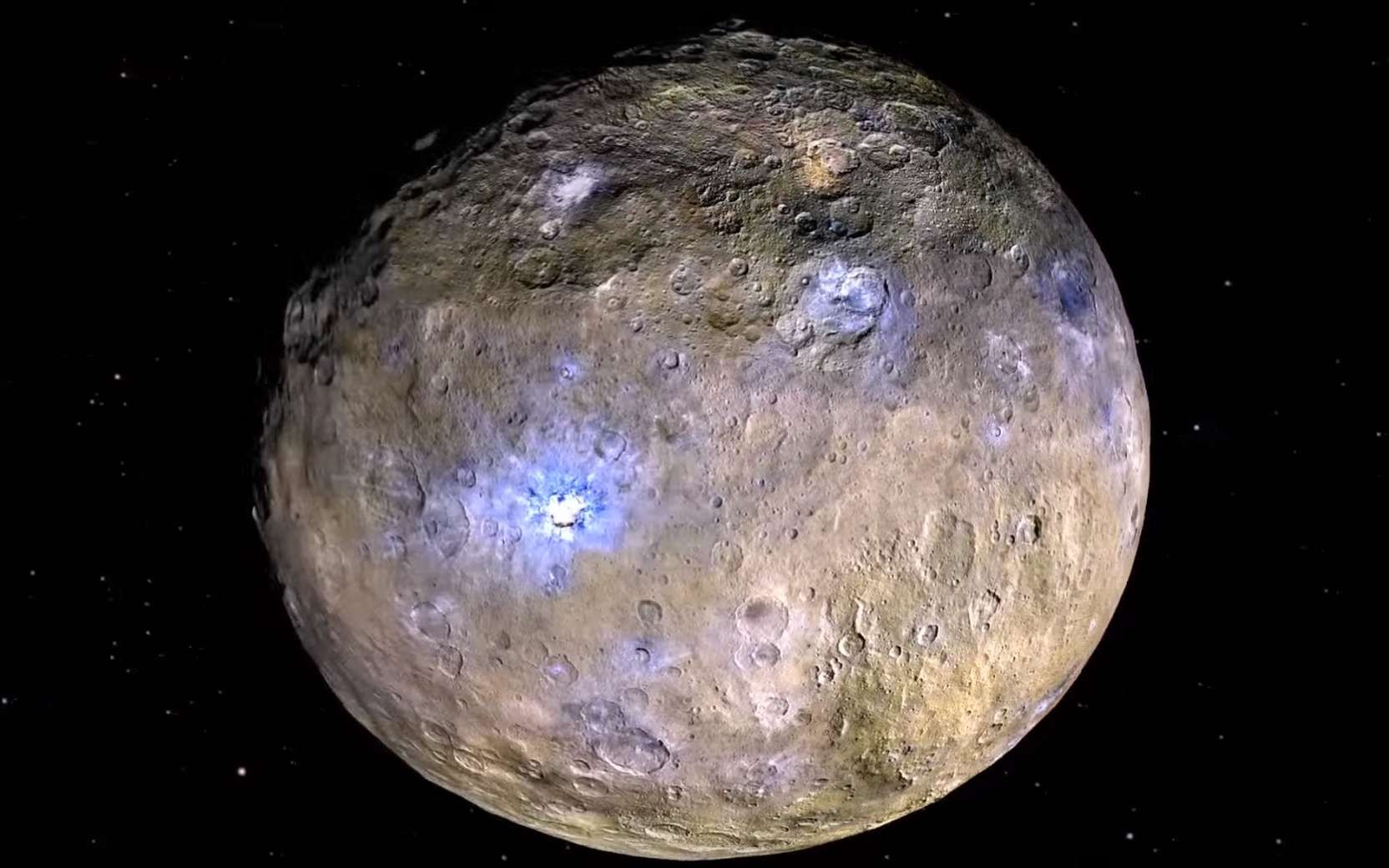A Finnish researcher proposes to create a human colony in orbit around Ceres, the largest object in the asteroid belt. This option, he says, would be a more viable alternative to Mars colonization.
As American astronauts prepare to return to the Moon as part of the Artemis missions, remember that several public agencies and other private companies are also targeting another target:the planet. March. This is particularly the case for SpaceX or even NASA, which is planning a first crewed mission in the 2030s.
The Red Planet is an obvious candidate, given its relatively close proximity to Earth, its day/night cycle of around 24 hours, and its CO2-rich atmosphere. But not everyone agrees, suggesting that colonizing another planet is more trouble than it's worth.
In a new article recently published in the arXiv database, astrophysicist Pekka Janhunen of the Finnish Meteorological Institute, proposes a much more creative ambition:that of build a station around the dwarf planet Ceres. Fans of The Expanse series will appreciate.

Discovered by Giuseppe Piazzi in 1801, Ceres (950 km in diameter) is the largest object in the asteroid belt , between Mars and Jupiter. This dwarf planet, once considered sterile, has been of increasing interest to the scientific community since the first passage of the American probe Dawn in 2015. And for good reason:it could be an "ocean world", with liquid and salty water flowing under its surface.
That said, in his article, Janhunen describes his vision of a mega-station made up of thousands of cylindrical spacecraft , all connected together in a disc-shaped frame orbiting Ceres. A general idea that inevitably brings us back to the O'Neill cylinder, a theoretical space habitat project proposed by the American physicist Gerard K. O'Neill in his book Space Cities .
Each of these cylindrical habitats could accommodate more than 50,000 people , supporting an artificial atmosphere and generating Earth-like gravity through the centrifugal force of its own rotation , also writes the researcher. To do this, each of the cylindrical habitats – measuring approximately 10 km long and 1 km in radius – would have to complete a full rotation every 66 seconds.
Humans could also rely on space elevators to transfer raw materials from the planet directly to their habitats in orbit.
Beyond the cylinders and their massive disk frame, the researcher also mentions two huge glass mirrors angled at 45 degrees to the disk, so as to reflect enough natural light in each habitat. This would be used to grow the plants, all embedded in a bed of soil 1.5 meters thick. The "urban" part of each cylinder, meanwhile, would rely on artificial light to simulate an Earth-like day/night cycle.

So why Ceres? On the one hand, because its average distance from Earth is comparable to that of Mars, recalls the researcher, which would "facilitate" space travel. Additionally, the dwarf planet is rich in nitrogen, which is an element present in the development of a hypothetical atmosphere (Earth's is about 79% nitrogen). Janhunen, very optimistic, judges that such installations could see the light of day in twenty or thirty years.
There are a few caveats nonetheless. Planetary habitability expert Manasvi Lingam of the Florida Institute of Technology sees this idea as a "plausible alternative" to colonizing the surface of Mars or the Moon, though it still lacks key considerations. /P>
The researcher raises two key issues. “ The first is a question of essential elements, other than nitrogen ” . One of these key elements is phosphorus, which the human body depends on to create DNA, RNA and ATP (a vital form of energy storage in cells). But not only. Indeed, every organism on Earth — including the plants that colonists might hope to grow in their floating habitats — needs it in one way or another. However, this element is never mentioned in this article. Just like oxygen, by the way.
The second caveat is technology, continues the researcher. Collecting raw materials on Ceres would require extracting these crucial elements from the rocks themselves. These operations will be impossible autonomous mining vehicles ready to be deployed on Ceres.
On paper, the idea sounds plausible, admits Lingam, but technically, we are still a long way off. Recall that just a few days ago, the InSight mission's HP3 heat flux sensor - nicknamed the "mole" by NASA - had to be abandoned by the American agency after failing to bury itself deep in the soil of the red planet.